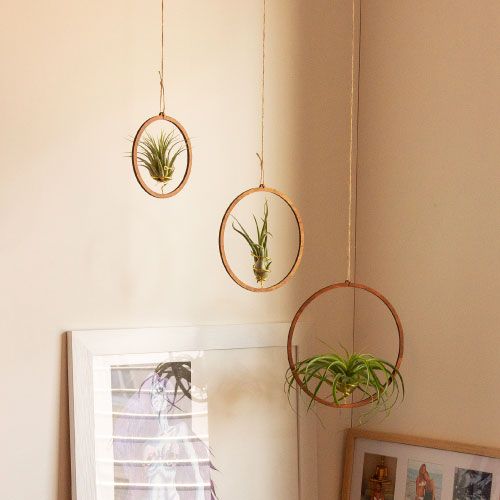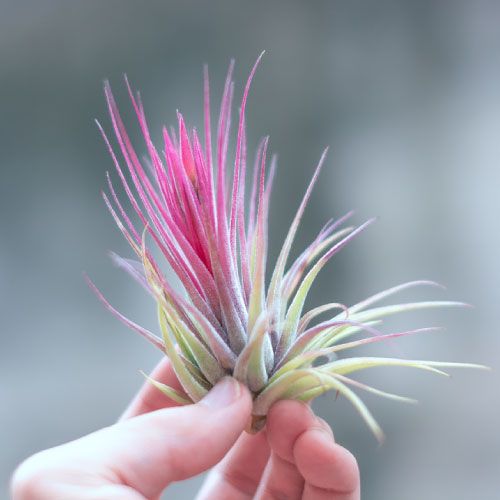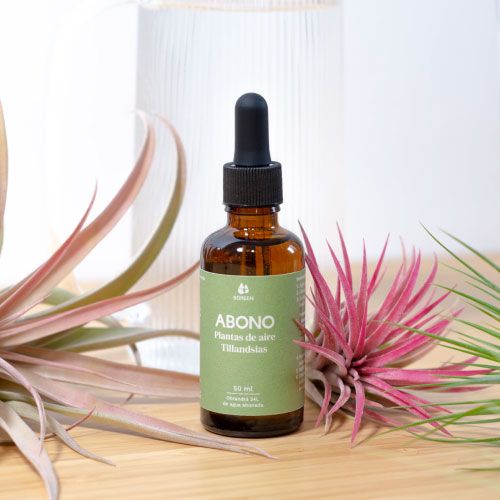Tillandsias, how big are the air plants?
How big are the air plants? It is a question that we receive often and that is why we want to give you an answer in this post and help you to know a little more about these exotic plants that are incredibly decorative and easy to care for.
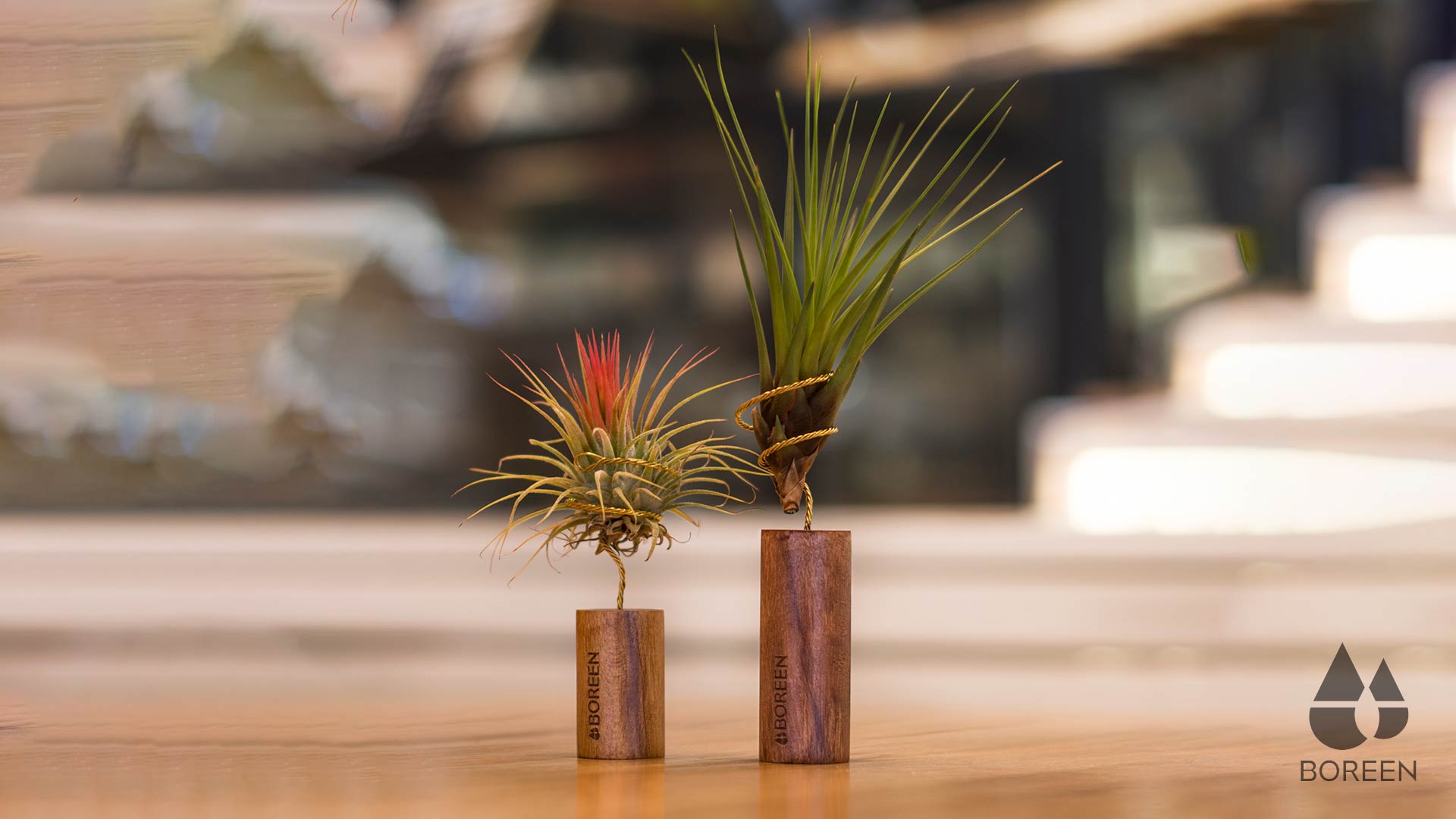
We often grow air plants because they are beautiful and surprising without knowing what variety of tillandsia we have or may be better depending on our environment and pace of life. It is important to know that different varieties usually have different needs, subtle differences that can affect their development and care.
The tillandsias or air plants are the largest genus of the bromeliad family and within this family there is a great variety of these incredible plants that live without land. Its origin, that of the air plants, is located in the south of the United States, Central America and South America. Very few tillandsias are able to thrive on earth. For example, Tillandsia cyanea, despite being epiphytic, is able to live on land. It is important that it is in a substrate that allows the water to be drained correctly. Water once the substrate is completely dry.
As a rule, air air plants or carnations are epiphytes so they live in trees. There are also lithophytic varieties, which live on rocks or non-living elements. It is even possible to see them on rooftops or telephone lines in one of the countries of South America, living sign of their resistance and strength.

These amazing plants are able to live in environments as different as mountains, forests or deserts and in their family you can find more than 650 different types of varieties. Hence, cataloguing all existing varieties of tillandsia plants is a complicated task, but we can talk about the most common, decorative and interesting.
How big are the air plants?
Depending on the specific variety of tillandsia and the moment of development in which the size of the plant is located, it may vary. As a general rule, air plants usually range from 6 - 8 centimeters to 25 -30 cms in height making them perfect for interior decoration. It must be borne in mind that nature is capricious and that it is not always possible to establish a premise that is fulfilled without exceptions, so the measures are indicative. Within these measures that we indicate there are different plants, some more stylized, others more rounded, with filiform leaves (thinner and elongated) and others wider and fleshier.
But beyond that, we can give a few indications regarding the size and characteristics of some of the most popular tillandsias so that you can better understand these amazing aerial plants.
Large air plants
TILLANSIA XER: The XER is the queen of air plants as far as size is concerned. Its green and wide leaves can often be seen in decoration magazines being used as a centerpiece. Depending on their time of development they range from 10 -15 centimeters in diameter to double or more. Its growth is super slow and can take up to 15 years to become an adult and give flower. The specimens that achieve a larger size usually come from the seeds of flowers. Here you have more information about tillandsia Xerográphica.

TILLANDSIA SEL: The SEL is a perfect air plant for interior decoration. Its stem is robust and its leaves are not very elongated so it is rather a "compact" plant. Your favorite place will always be close to natural light. You can place it somewhere where it receives indirect or direct light if it is first or late in the day. It can reach from 8 to 20 centimeters in size with a diameter of between 4 and 7 centimeters. Regarding the adequate humidity for this plant, we recommend placing it somewhere where there is enough humidity since being a mesica plant and therefore, not having a large amount of trichomes, receiving moisture frequently will keep it happy and content.
TILLANDSIA SPA: The SPA air plant is a plant with thin and elongated leaves that looks great on a suspension support. Its natural color is a velvety green that can have grayish tones if it has a large number of trichomes. It is even possible, although on a rarer occasion, to acquire pinkish tones. These aerial plants can reach about 15 centimeters in diameter and up to 50 in length or even more. Like their tillandsia companions, the SPA plants can bloom and give beautiful flowers of bright colors that, unlike the other tillandsias these if they give a very pleasant and fresh smell. Usually, the flowers of the air plants have no aroma.
Medium air plants
Medium air plants can range from 6 - 8 centimeters wide to 25 in height. They are decorative plants that serve to give a natural touch to the different corners of our house and also contribute to purify the air of our house. Here we leave you a selection of the most frequent tillandsias although other varieties of tillandsias can be found on our website:
PLANT VAR: One of the favorite and most colorful plants of the tillandsias. They are a spectacle at the time of flowering. They usually measure 5 - 7 cms in diameter and reach a height of 6 cms. They love clarity and their favorite place will be near a window from which they can receive indirect natural light.

PLANT UDO: It is a plant with thin and elongated leaves. Its size reaches 25 cms while its width can be 7 - 10 cms. This plant loves moisture and that is why it will be happy as long as it receives between 4 - 5 sprays per week.
PLANT TRI: Another beauty in the form of an air plant. This beautiful plant can reach 14 centimeters in height and a width of 7 centimeters. It is a plant that has few trichomes and therefore submerging it once or twice a week is ideal for it to maintain its hydration. It is very important that you have good ventilation after bathing.
PLANT MAG: This is an exquisite aerial plant covered with a large number of trichomes, which is why it is considered xeric. It is prepared to better cope with high temperatures and solar incidence so it would be a suitable option as an outdoor plant.
JUN FLOOR : This plant belongs to the category of filiform plants, that is, whose leaves are thin and elongated. These thin leaves can measure up to 35 cms although their usual size is around 20 cm in height and 10 in width. The best place for these air plants is near some stream where they can enjoy the undulation of the breeze.
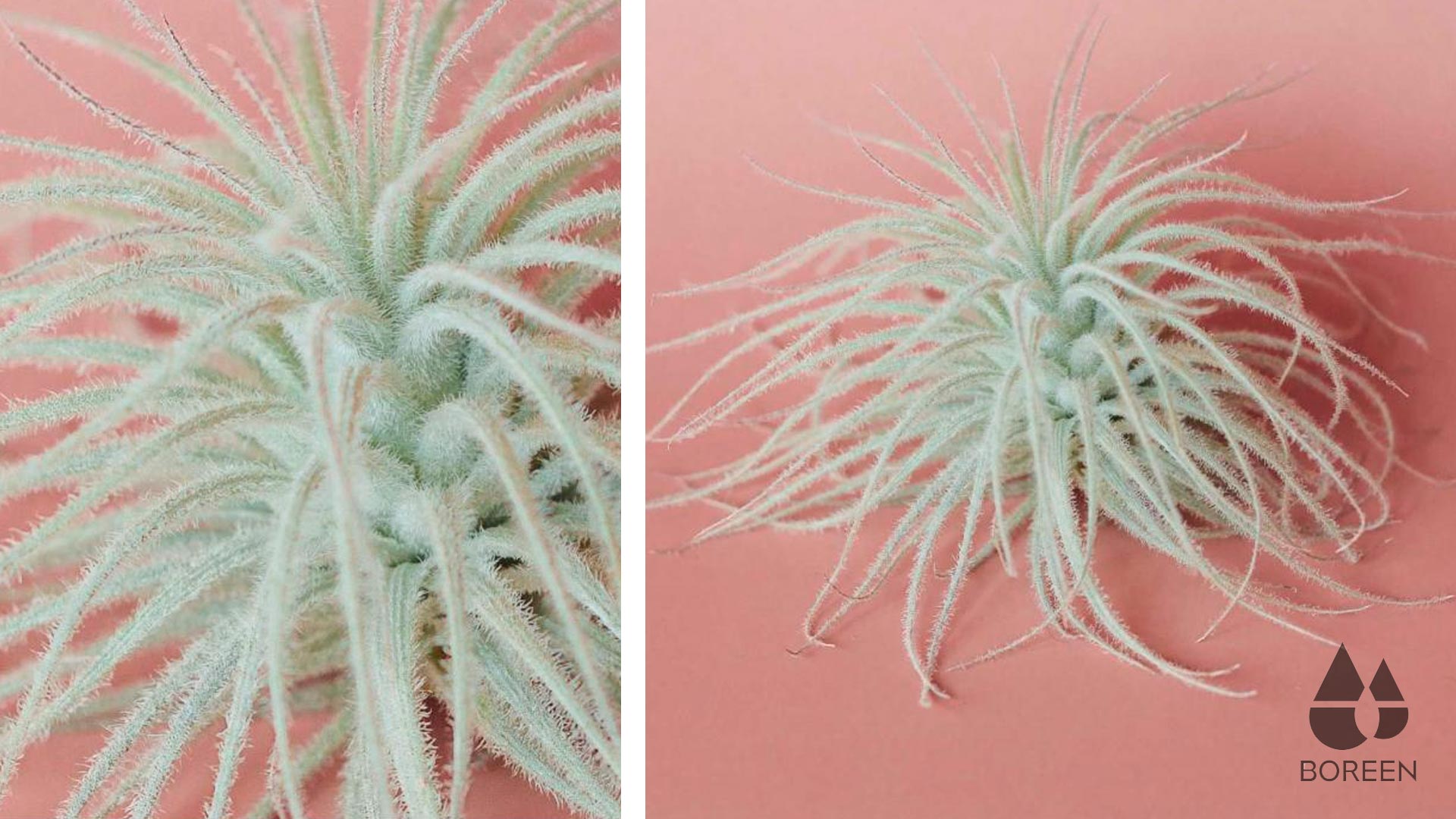
PLANT YUKI: This plant contains the largest number of trichomes of all so it can be considered a xeric aerial plant. The greater the number of trichomes, the more protection against solar radiation. Remember that while they are moistened, the trichomes hydrate and lie on the leaves of the plant, if they receive direct sun, not having the protection of the trichomes they could suffer burns on their leaves. You just have to make sure that after bathing or spraying water, the excess water is drained correctly and you will have an almost immortal plant.
What variety of air plant can do better according to environmental conditions
As we said we often grow air plants without knowing which variety of tillandsia we have or can go better. In addition to being able to make a classification by its size, it is possible to make another classification depending on its foliage. This issue affects the issue of care that we mentioned before.
Of course all plants require similar care in terms of light, water and ventilation, but in a family of 650 varieties it is normal to find some differences between them that enhance specific qualities of one compared to another.
- Xeric air plants : Its foliage is predominantly gray, bluish or even white thanks to the trichomes, "small hairs" that contribute to better resist dry weather conditions and the sun's rays. They tend to maintain moisture better and resist solar incidence better.
- air plants: They are the tillandsias of green foliage. Its natural habitats are subtropical or tropical moist low temperatures and little exposure to the sun's rays.
We hope that these indications have helped you to know the air plants and help you to choose better when it comes to locating, watering or acquiring them. We would love to know if you found the information in the article about the air plants and xeric ones interesting. If you have any questions about the sizes or characteristics of other varieties do not hesitate to leave us a comment below and we will contact you.




